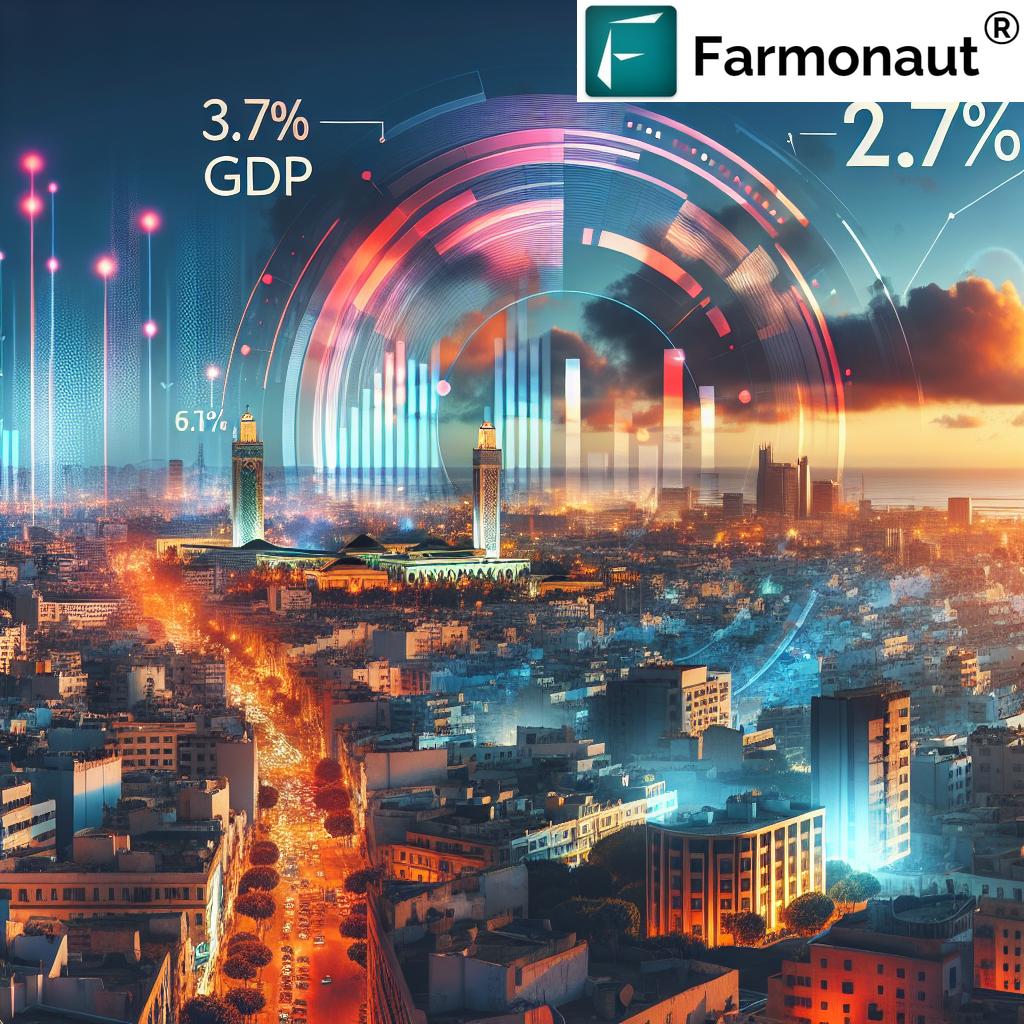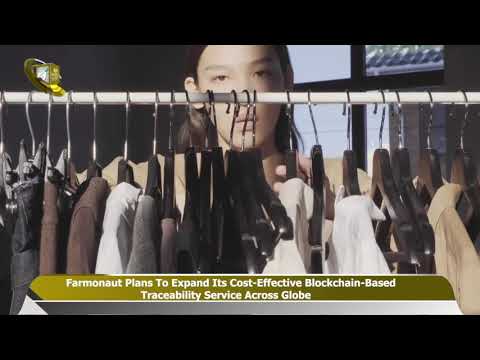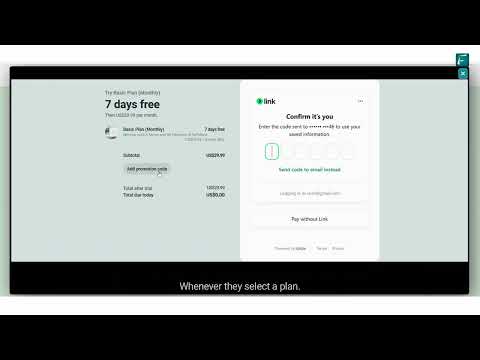Morocco’s Economic Outlook 2025: Structural Reforms and GDP Growth Forecast

“Morocco’s GDP growth is forecast to accelerate to 3.7% by 2025, showcasing economic resilience despite challenges.”
As we delve into Morocco’s economic landscape for 2025, we find a nation poised for growth amidst ongoing challenges. In this comprehensive analysis, we’ll explore the structural reforms, GDP growth forecasts, and key economic indicators that are shaping Morocco’s financial future. Our examination will provide valuable insights for stakeholders interested in the country’s economic trajectory and investment potential.
Economic Resilience and Growth Projections
Morocco’s economy has demonstrated remarkable resilience in the face of persistent drought conditions and global economic uncertainties. Despite these challenges, the country’s GDP growth is expected to accelerate to approximately 3.7% over the next few years. This positive outlook is underpinned by several factors:
- Robust domestic demand offsetting weak agricultural output
- A new series of infrastructure projects
- Continued implementation of structural reforms
The International Monetary Fund (IMF) has recognized Morocco’s progress in strengthening its economy against shocks, highlighting the country’s commitment to fiscal consolidation and investment in critical sectors.
Fiscal Performance and Deficit Reduction
“Morocco’s fiscal deficit improved in 2024, closing at 4.1% of GDP, reflecting progress in fiscal consolidation efforts.”
Morocco’s fiscal performance has shown noteworthy improvement, with the central government fiscal deficit closing at 4.1% of GDP in 2024. This figure represents a significant enhancement from previous projections, primarily due to:
- Better-than-expected tax revenues
- Effective management of government spending
- Implementation of fiscal reforms
The Moroccan government’s commitment to fiscal consolidation is evident in its efforts to rationalize expenditure while boosting revenue collection. This approach has not only improved the country’s fiscal position but also created more room for investment in critical sectors of the economy.
Structural Reforms and Investment Climate
A key driver of Morocco’s economic outlook for 2025 is the ongoing implementation of structural reforms. These reforms are designed to enhance the country’s business environment, boost private sector-led development, and improve market competition. Some notable reforms include:
- Restructuring of state-owned enterprises (SOEs)
- Operationalization of the Mohammed VI Investment Fund
- Implementation of the new Charter of Investment
These initiatives are expected to catalyze private investment and create a more dynamic and competitive economic landscape. For businesses looking to leverage these opportunities, Farmonaut’s product traceability solutions can provide valuable support in ensuring transparency and compliance within supply chains, particularly important in an evolving regulatory environment.
Climate Change Resilience and Sustainable Development
Morocco has made significant strides in bolstering its resilience to climate change, a critical factor in its long-term economic sustainability. Under the IMF’s Resilience and Sustainability Facility (RSF) arrangement, the country has implemented several measures aimed at:
- Protecting underground water resources
- Preparing for changes in water tariffication
- Improving the regulatory framework for renewable energy production
- Reinforcing fiscal and financial systems’ resilience to climate-related risks
These efforts align with global sustainability goals and position Morocco as a leader in climate change adaptation in the region. For agricultural businesses looking to contribute to these sustainability efforts, Farmonaut’s carbon footprinting tools can help monitor and reduce environmental impact, aligning operations with national sustainability objectives.
Monetary Policy and Inflation Management
Bank Al-Maghrib (BAM), Morocco’s central bank, has played a crucial role in managing inflation and supporting economic growth. Key aspects of the monetary policy include:
- Lowering of the policy rate in response to decelerating inflation
- Plans to transition to an inflation targeting framework
- Careful management of the dirham’s fluctuation within a ±5 percent band
These measures have contributed to stabilizing inflationary pressures and supporting economic activity. The central bank’s data-dependent approach suggests a cautious but responsive monetary policy stance moving forward.
Labor Market Challenges and Opportunities
While Morocco’s economic outlook is generally positive, challenges persist in the labor market. The unemployment rate remains elevated at around 13%, primarily due to job losses in the agricultural sector. Addressing this issue is crucial for inclusive growth and social stability. The government’s focus on:
- Promoting job-rich growth
- Enhancing skills development programs
- Supporting entrepreneurship and SMEs
These initiatives aim to create more employment opportunities, particularly for youth and in rural areas. For businesses operating in the agricultural sector, Farmonaut’s large-scale farm management solutions can help optimize operations and potentially create more sustainable employment opportunities.
External Sector Performance and Trade Balance
Morocco’s external sector performance shows a mixed picture, with some improvements and ongoing challenges:
- Current account deficit widened slightly in 2024
- Exports of goods showed resilience, with a slight decrease of 0.5% in U.S. dollar terms
- Imports of goods decreased by 2.6% in U.S. dollar terms
The country’s efforts to diversify its export base and attract foreign direct investment (FDI) are crucial for improving its external position. The government’s focus on developing high-value industries and promoting Morocco as an investment destination is expected to yield positive results in the coming years.
Financial Sector Stability and Development
Morocco’s financial sector has shown resilience, with ongoing efforts to align supervisory and regulatory frameworks with international standards. Key areas of focus include:
- Addressing rising risks from non-performing loans (NPLs)
- Managing bank concentration
- Introducing a secondary market for NPLs
These measures aim to enhance the stability and efficiency of the financial system, crucial for supporting economic growth and investment. For agricultural businesses seeking financial support, Farmonaut’s crop loan and insurance solutions can provide valuable assistance in accessing financing and managing risks.
Economic Indicators Comparison (2024-2025)
| Economic Indicator | 2024 (Estimated) | 2025 (Forecast) |
|---|---|---|
| GDP Growth Rate | 3.2% | 3.7% |
| Fiscal Deficit (% of GDP) | 4.1% | 3.9% |
| Inflation Rate | 0.9% | 2.2% |
| Unemployment Rate | 13.3% | 13.2% |
| Investment in Renewable Energy | Ongoing regulatory improvements | Increased private sector participation expected |
| Water Resource Management Initiatives | Implementation of protection measures | Preparation for tariff changes |
Challenges and Risks
While Morocco’s economic outlook is generally positive, several challenges and risks remain:
- Vulnerability to drought and climate change impacts on agriculture
- Dependence on key export markets, particularly in Europe
- Need for continued structural reforms to boost competitiveness
- Persistent unemployment, especially among youth
Addressing these challenges will be crucial for sustaining Morocco’s economic growth trajectory and ensuring inclusive development. The government’s commitment to ongoing reforms and investment in key sectors provides a foundation for managing these risks effectively.
Conclusion and Future Outlook
Morocco’s economic outlook for 2025 presents a picture of resilience and potential growth, underpinned by structural reforms and strategic investments. The country’s focus on fiscal consolidation, climate resilience, and private sector development positions it well for future economic expansion. Key takeaways include:
- Projected GDP growth of 3.7% by 2025
- Improved fiscal performance with a deficit of 4.1% of GDP in 2024
- Ongoing structural reforms to enhance the business environment
- Significant progress in climate change resilience and sustainable development
As Morocco continues to navigate global economic uncertainties and domestic challenges, its commitment to reform and strategic development provides a solid foundation for future growth. For businesses and investors looking to capitalize on Morocco’s economic potential, staying informed about these developments and leveraging innovative solutions like those offered by Farmonaut can provide a competitive edge in this dynamic market.
FAQ Section
- What is the projected GDP growth rate for Morocco in 2025?
The GDP growth rate for Morocco is forecast to accelerate to about 3.7% by 2025. - How has Morocco’s fiscal deficit changed in recent years?
Morocco’s fiscal deficit improved in 2024, closing at 4.1% of GDP, better than initially projected in the 2024 Budget. - What are the main structural reforms being implemented in Morocco?
Key structural reforms include restructuring state-owned enterprises, operationalizing the Mohammed VI Investment Fund, and implementing a new Charter of Investment. - How is Morocco addressing climate change resilience?
Morocco is implementing measures to protect water resources, improve renewable energy regulations, and reinforce fiscal and financial systems against climate-related risks. - What is the current unemployment rate in Morocco?
The unemployment rate in Morocco remains elevated at about 13%, primarily due to job losses in the agricultural sector.
Earn With Farmonaut: Join Farmonaut’s Affiliate Program
Earn 20% recurring commission with Farmonaut’s affiliate program by sharing your promo code and helping farmers save 10%. Onboard 10 Elite farmers monthly to earn a minimum of $148,000 annually—start now and grow your income!
Farmonaut Subscriptions
For developers interested in integrating Farmonaut’s satellite and weather data into their own systems, check out our API and API Developer Docs.







